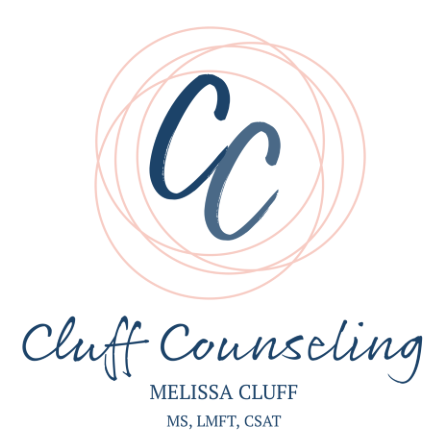
“There’s no need to go and blow the candle out / Because you’re not done. / You’re far too young / And the best is yet to come.” ~”Lullaby” by Nickelback
Suicide is devastating to family, friends, and a community. The loss from suicide leaves a gaping hole in families, neighborhoods, schools, and communities; each suicide intimately affects at least six other people. Parents, siblings, classmates, coaches, and neighbors may be left wondering if they could have done something to prevent that young person from turning to suicide. In this post I will go over the suicide warning signs someone who is contemplating suicide might exhibit. In a future post, I will discuss how to help this person, or get help if you are the one considering suicide.
The World Health Organization estimates that approximately 1 million people worldwide die each year from suicide. For those who are not in the grips of suicidal depression and despair, it may be difficult and even confusing to understand what would drive so many individuals to take their own lives. However, a suicidal person is in so much pain that he or she can see no other option. This is why knowing what to look for can prevent suicide and provide help and hope as an alternative.
National Suicide Prevention Hotline (24 hours a day): 1-800-273-8255
WARNING SIGNS
There are many potential warning signs to suicide; the following are some of the most common red flags to look for:
- Self-harm or suicidal talk. Take any talk or mention of suicide very seriously. This is not just a warning sign, it is a cry for help!
- Talking or writing a lot about death or dying.
- Hopelessness. Though subtle, studies have found that hopelessness is a strong predictor of suicide. This hopelessness is often accompanied by “unbearable” feelings, a bleak future, and feeling like there nothing to look forward to.
- Loss of interest in day-to-day activities.
- Neglect of his/her appearance.
- Big changes in eating or sleeping habits.
- Withdrawing from friends and family. Increasing social isolation and the desire to be left alone.
- Dramatic mood swings or sudden personality changes, such as switching from outgoing to withdrawn or well-behaved to rebellious.
- Self-loathing and self-hatred. Feelings of worthlessness, guilt, shame, and self-hatred; feeling like a burden that no one would miss.
- Self-destructive behaviors. Increased alcohol or drug use, reckless driving, unsafe sex.
- Seeking out lethal means, such as weapons and drugs.
- Getting affairs in order. Making out a will, giving away prized possessions, making arrangements for family members.
- Saying goodbyes. This might include unusual or unexpected visits or calls to family and friends and saying goodbye to people as if they will not be seeing each other again.
These signals are even more dangerous if the person has a mood disorder such as depression or bipolar disorder, suffers from alcohol dependence, has previously attempted suicide, or has a family history of suicide. Take these red flags very seriously!
National Suicide Prevention Hotline (24 hours a day): 1-800-273-8255
If you see or experience any of these warning signs, do not dismiss them! I will write a detailed post on what to say and how to help in these situations next week. If you need immediate help, I suggest approaching a teacher or school counselor–they are trained to assist you and your classmates with this delicate yet urgent matter. Additionally, the National Suicide Prevention Hotline is available for calls and chats 24 hours a day (1-800-273-8255), and most communities have hotlines you can text for immediate anonymous help. In dire circumstances, call 911.
Knowing these warning signs could save a life. Pay attention to your peers. As always, please do not hesitate to contact me with questions. If you are battling thoughts and feelings of hopelessness and self-harm, please click here to schedule a session. My door is always open for you!
Melissa Cluff is a licensed marriage and family therapist based in Lewisville, Texas, personally seeing clients in the North Dallas area.
Resources:
- American Foundation for Suicide Prevention: “Suicide Stats”
- Cluff Counseling: “Beginning the Conversation: Teen Suicide”
- Cluff Counseling: “Choosing the Right Therapist for You”
- Cluff Counseling: “Creating Conversation Around Your Mental Illness”
- Cluff Counseling: “Depression is Not a Life Sentence”
- Cluff Counseling: “The Early Indicators of Mental Illness”
- Cluff Counseling: “How To Rise and Shine”
- Cluff Counseling: “Teen Mental Health: Recognize it, Talk About it, Care for it”
- Cluff Counseling: “Taking the Stigma Out of Mental Illness”
- Cluff Counseling: “The Truth Behind the Increase in Teen Suicide”
- Find Your Words: “UNDERSTANDING DEPRESSION: Depression and suicide”
- Help Guide: “Suicide Prevention”
- Mayo Clinic: “Teen suicide: What parents need to know”
- Mayo Clinic: “What to Do When Someone Is Suicidal”
- Mental Health First Aid: “How to Help Someone Who is Suicidal”
- National Suicide Prevention Hotline: 1-800-273-8255 (24 hours a day)
- National Suicide Prevention Website
- The Parent Resource Program: “Teen Suicide Statistics”
- Spinditty: “95 Songs About Suicide and Suicide Prevention”
- Stop Bullying Website
- Suicide Prevention Lifeline Live Chat
- Suicide Prevention Lifeline: Youth
- Suicide Prevention Lifeline Website
- Youth.gov: Suicide Prevention
- YouTube: “We See You – A Message To Students Everywhere”

